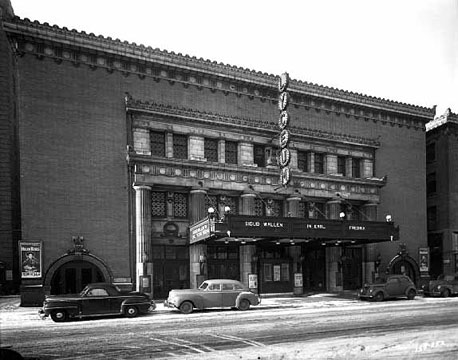Where it is – Why and How.
In the early seventies I received a call from Stephen Pflaum, one of my attorneys at the Leonard Street and Deinard Law Firm. I thought to myself “What have I done wrong now?” Stephen replied “Nothing this time, but we need your help.”
The Minnesota Orchestra performed for many years in Northrup Auditorium on the University of Minnesota campus. The Orchestra left Northrup in the early seventies and began the search for a new venue in which to perform. In the suburbs or in the city – in an existing or a new facility – as a tenant or as an owner?
The leader of The Orchestral Association, John Pillsbury, and several other prominent music lovers, Kenneth Dayton and Judson Bemis strongly favored downtown Minneapolis if an adequate facility could be identified. Stephen Pflaum, a Minneapolis attorney, was appointed chairman of this search committee and thus the intensive search began.
Cyril Harris, a well known acoustical consultant, was retained to assist with the search. I was not related to Harris; My only claim to fame in the music world was/is that I am related to Aaron Copland, the world famous composer.
The Committee first focused on the possibility of moving into one of the theaters on Hennepin Ave. It was soon concluded that none of the existing venues on Hennepin Ave. would meet the criteria to be used by the Orchestra. The search committee then directed their efforts to determine if any other existing facility would meet the rigid requirements.
A concurrent search for a site for a new music hall was begun. These efforts were intense. Many hours and many days passed as I searched; the possibility of an existing building appeared – The Old Lyceum Theater on 11th St. between Nicollet and Marquette Ave. The Old Lyceum was then owned by a religious group, Souls Harbor, represented by Rev. Gordon Peterson. A multi tenant office building was adjacent to the Lyceum and could be converted to administrative offices for the Orchestral Association if it could also be acquired.

Coincidentally, in 1905, the Lyceum, (then owned by NW National Life Insurance Co.) was used as its musical venue by the Orchestra. Maestro Skrowaczewski and others excitedly thought that moving the Orchestra back into the original Lyceum venue would be a great idea – conditioned on a careful review of the building condition, acoustics, renovation costs, adequate number of seats etc. etc. I was authorized and succeeded in negotiating purchase options for the Lyceum and the adjacent office building – at which point the analysis of the Lyceum began.
The analysis concluded that the condition of the building was acceptable, the acoustics outstanding and the number of seats adequate. However, one large and unexpected problem surfaced – while there were the number of seats required, the width of a seat needed by todays music lover is considerably wider than existed in the Lyceum, and therefore new wider seats would be required – thus reducing the number of seats. It was soon concluded that building renovation costs would be comparable to the costs of a new structure.
The committee quickly concluded – A newly constructed Orchestra Hall.
In making a new construction decision, the committee set up the following criteria:
- Ownership of the entire “Lyceum” block would be necessary
- Removal of all structures on the block by May 1, 1974. The timelines required removal of more than a dozen tenants from two office buildings – most of which had leases!
The committee was determined to break ground on the block by May 1, 1974 – a daunting task for me.
My assignment consisted of buying all of the properties on the block and moving out all of the tenants! The City of Minneapolis was unwilling to provide any acquisition or relocation assistance. This was to be entirely a private development project – the city did suggest possible availability of some financial assistance at project completion. The City was skeptical that a project of this size and complexity would ever be privately planned, financed, and built with a groundbreaking on May 1, 1974. “There is no way this will happen without public assistance,” according to City Coordinator Tommy Thompson.
Private collaboration and determination proceeded to accomplish a miracle. Private donors cobbled together the financing needed. A financial commitment was even received from the Peavey Foundation to fund the construction of a small park (Peavey Plaza) on the Orchestra block.
We were able to complete the acquisition of the five properties to complete the ownership control of the entire block. Only the relocation of the office tenants remained, most of whom had leases; with a great deal of cajoling and handholding, I was able to locate a place for each tenant and physically assist in their move. Everything required was completed by May 1, 1974.
SUCCESS.
Minneapolis has the Minnesota Orchestra in a permanent home.
Image source:
Pascual, A. (2020, July 03). Twin Cities Music Highlights. Retrieved January 20, 2021, from https://twincitiesmusichighlights.net/venues/lyceum/
